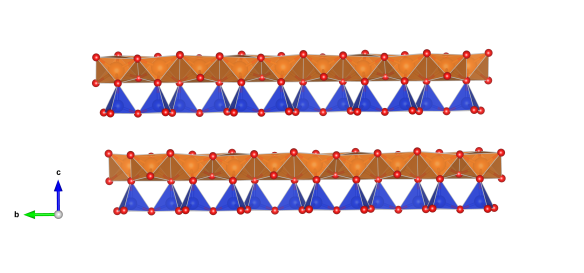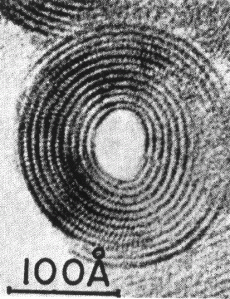Deadly crystal structures – Chrysotile
So in the next of our 'Friday trawls of the internet for stuctures to write about over the weekend' we've come across this list of deadly minerals. With the toxic effect of these minerals on the human body, understanding of their crystal structures, contents and physical properties becomes very important to understand. Let's zoom into the atomic structure of a few of them.
What does it look like?

Image generated by the VESTA (Visualisation for Electronic and STructual analysis) software http://jp-minerals.org/vesta/en/
What is it?

Picture from: http://ethomas.web.wesleyan.edu/ees123/sheet04.htm
In this case the crystal structure of Chrysotile has contributed to its toxic properties. It is one of a group of materials that are known as 'Asbestos' minerals. It's another sheet silicate, like Kaolinite and Talc that we've featured elsewhere. But, unlike the others, it doesn't have other atoms sandwiched between the layers. And because the octahedral magnesiums (the orange top layers) are a little bigger than the silicate tetrahedra (the blue bottom layers) this forces the layers to curl in on themselves and create long thin needle crystals. It these needles that gives Chrysotile its great insulating properties, but makes it toxic to us as they can lodge in our lungs and cause a number of diseases.
Where did the structure come from?
The structure was of Chrysotile was first determined by B. E. Warren and W. L. Bragg in 1931. It's structure number #1010960 in the Crystallography Open Database.






